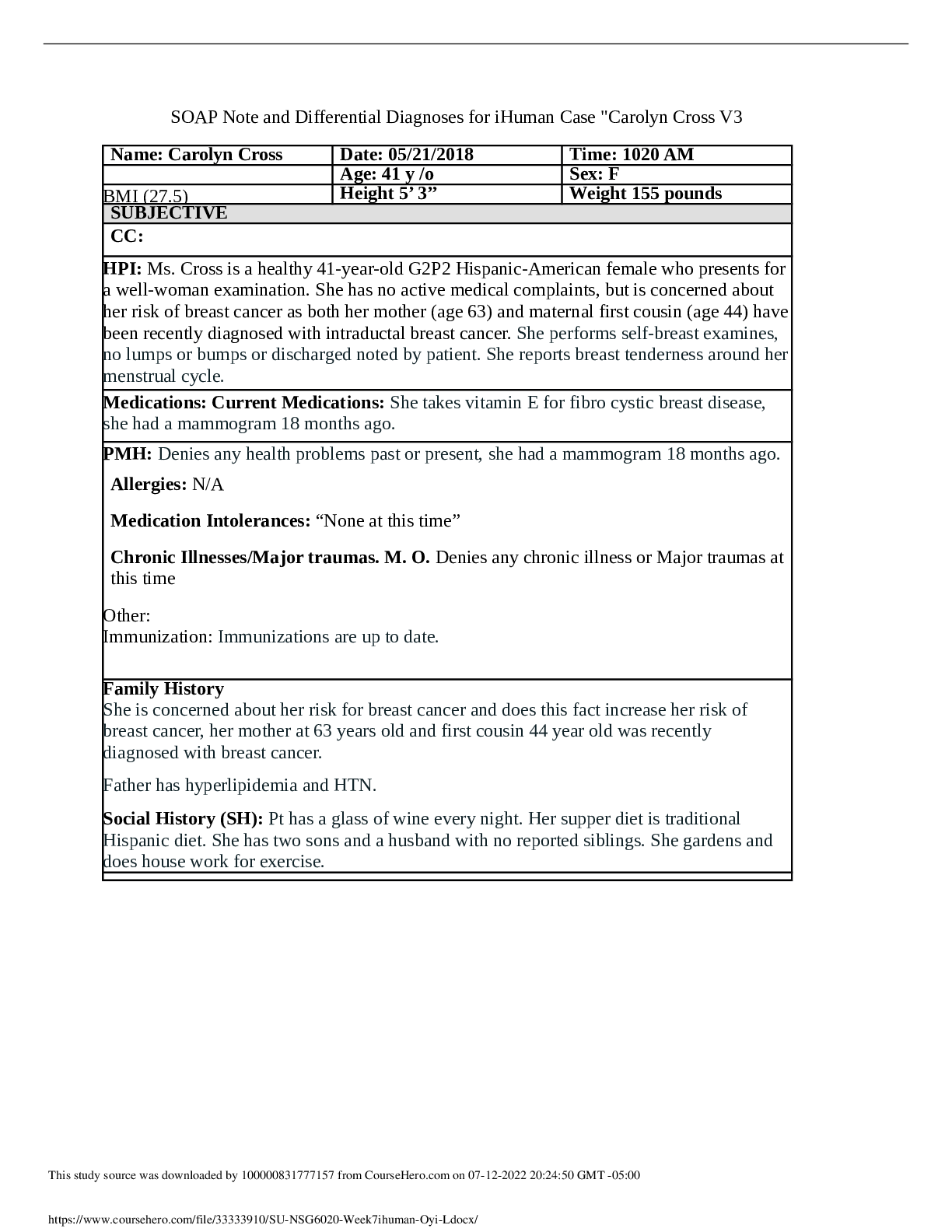*NURSING > iHuman > Chamberlain College of Nursing _Week 1 NR602 Ihuman Case Attempt one,100% CORRECT (All)
Chamberlain College of Nursing _Week 1 NR602 Ihuman Case Attempt one,100% CORRECT
Document Content and Description Below
Chamberlain College of Nursing _Week 1 NR602 Ihuman Case Attempt one Week 1 NR602 Ihuman Case Attempt one 42Y/o 5’5 149lb CC: Two right breast lumps RH is a 42 year old female that presents... with complaints of two right sided breast lumps. Patients mother was diagnosed with breast CA at age 48, currently still living. patient breast biopsy showed atypical ductal hyperplasia. she denies breast pain, discharge, bleeding, skin changes, palpable lymph nodes or fevers. she reports a recent 11lb weight loss over the past 3 months due to unknown cause. Questions asked • How can I help you today? • Do you have any other symptoms that we should discuss • When did your problems with your breast start • Is there pain the site of the lump • Change in size • Is the lump movable • Any lumps in neck • Change in medications • No OTC medications • Vaccinations • Breast problem better or worse • Weight loss • Symptoms of Fatigue/ • Chest pain or discomfort • Depression question • Use of Birth control • Mammogram • Nipple change • Pain anywhere • Changes in itchy scalp • Problems with headache • Muscle pain /joints • Change in ability • Nose bleeds • Breast self exam • Tender breasts • Early menopause • Hypothyroid • Pancreatic Ms. Rachael Hardy is a 42-year-old woman who presents with two self-detected breast lumps. She had a prior breast biopsy three years ago that identified an atypical ductal hyperplasia. She denies breast discharge, bleeding, overlying skin changes, lymphadenopathy, fevers or past breast trauma. She reports an 11-pound weight loss due to diminished appetite over the last three months. Her mother was diagnosed with breast cancer at age 48 (I-Human, n.d.). Discuss the questions that would be important to include when interviewing a patient with this issue. Inquire about pain. Note onset, duration, location, and relation to menstrual period and if pain is constant or intermittent? What has the patient tried to alleviate the pain? Note what has worked. Inquire about the patient’s family history of breast pain, lumps, or cancer. Has there been trauma such as being hit or having rough experience during sex? Do her breasts hurt during or after exercise such as running, aerobics, soccer, or basketball? Does she wear a good, supporting, properly fitted bra generally and for sports? Has she had any breast surgery or biopsy? Note medication history such as oral contraceptives or phenytoin (Cash & Glass, 2014). Describe the clinical findings that may be present in a patient with this issue. Upon inspection the breasts may have masses; dimples; changes in the skin; and/or changes in the way the nipples are pointed (Cash & Glass, 2014). Upon palpation of the breasts there could be hard, fixed, or cystic masses in the breast, under the nipple, in the tail of the breast, and in the axilla; also nipple discharge may be also present (Cash & Glass, 2014). In this case the physical exam revealed a palpable 2.5 cm mass in the upper-inner quadrant of the right breast at the 2 o’clock position and a 2-cm, right-breast mass at the 12 o’clock position. A hard, mobile, right-axillary lymph node was also palpable (I- human, n.d.). Are there any diagnostic studies that should be ordered on this patient? Why? Diagnostic tests may include: a mammogram; an ultrasonography to differentiate cystic from solid masses; an MRI may be useful for detecting tissues with increased blood flow but limited by false positive results; a fine needle aspiration and biopsy; and/or an excisional biopsy for solid lumps (Cash & Glass, 2014). List the primary diagnosis and three differential diagnoses for this patient. Explain your reasoning for each. Primary Diagnosis: Breast mass/lump, neoplastic: there is evidence upon physical examination of the presence of two breast lumps. The mammogram was abnormal and highly suspicious for breast cancer with three masses detected and an enlarged right axillary lymph node. The breast biopsy was positive for invasive ductal carcinoma and the lymph node biopsy is positive for metastatic breast adenocarcinoma (I-Human, n.d.). Three Secondary Diagnoses: 1- Fibroadenoma: usually regress after menopause and generally present as a well- defined mobile mass smooth and hard like a marble on physical examination or a well- defined solid mass on ultrasound (McCance & Huether, 2013). 2- Fibrocystic disease (breast cysts): Cysts, which are fluid-filled sacs, feel soft, baggy when they occur close to the surface of the breast but when deeply implanted they can feel hard. The frequency of fibrocystic lesions is probably associated to hormonal changes, which are also affected by genetics, age, parity, history of lactation, caffeine consumption, and use of exogenous hormones (LeMone, Burke & Bauldoff, 2011). 3- Breast Lipoma: Lipomas are benign mesenchymal tumors that develop in areas of abundant adipose tissue and usually develop as well-circumscribed, encapsulated masses with a doughy feel that is freely mobile underneath the skin (Ramírez-Montaño, Vargas-Tellez, Dajer-Fadel & Espinosa Maceda, 2013). Discuss your management plan for this patient, including pharmacologic therapies, tests, patient education, referrals, and follow-ups. Referral for surgical, radiation, and medical oncology for mastectomy and radiation therapy seems the best approach for this patient. But a referral to a psychologist and a support group is also appropriate in this case because a person diagnosed with cancer may exhibit a variety of psychologic and emotional responses. Some of them see it as a death sentence, experiencing overwhelming grief and sometimes giving up hope. Others, feel guilt and consider cancer a punishment for past behaviors. Common emotions are grief, anger, powerlessness, fear, isolation, and concerns about body image and sexual dysfunction (LeMone, Burke & Bauldoff, 2011). During the process of cancer diagnoses, treatment, and recovery, we, as health care professionals have the vital responsibility of providing these patients support and managing their physical and emotional responses through the disease process and treatment. • Its false on malignant on physical exams Webex notes week 1 • Abcess must not miss • [Show More]
Last updated: 1 year ago
Preview 1 out of 6 pages

Reviews( 0 )
Document information
Connected school, study & course
About the document
Uploaded On
Jul 17, 2022
Number of pages
6
Written in
Additional information
This document has been written for:
Uploaded
Jul 17, 2022
Downloads
0
Views
48



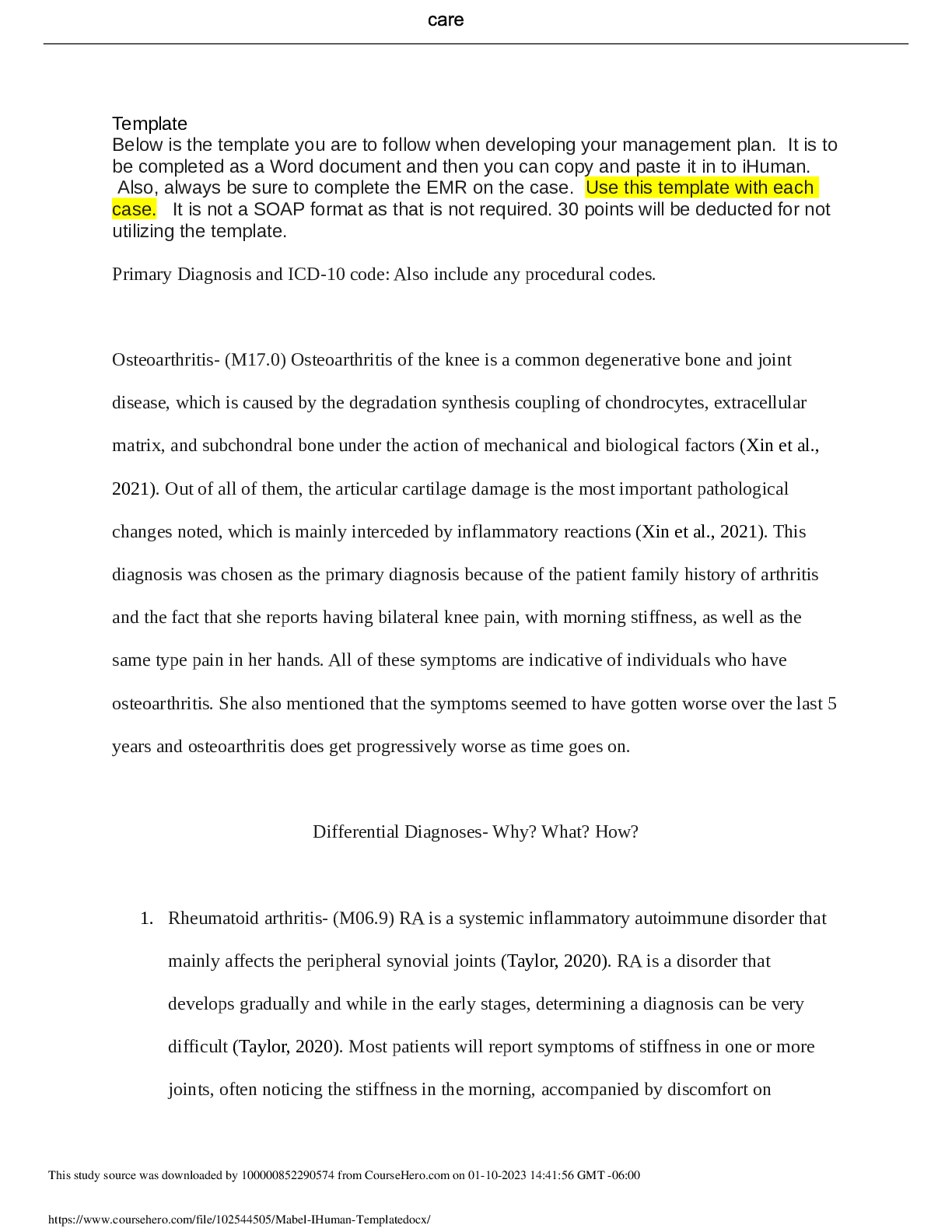


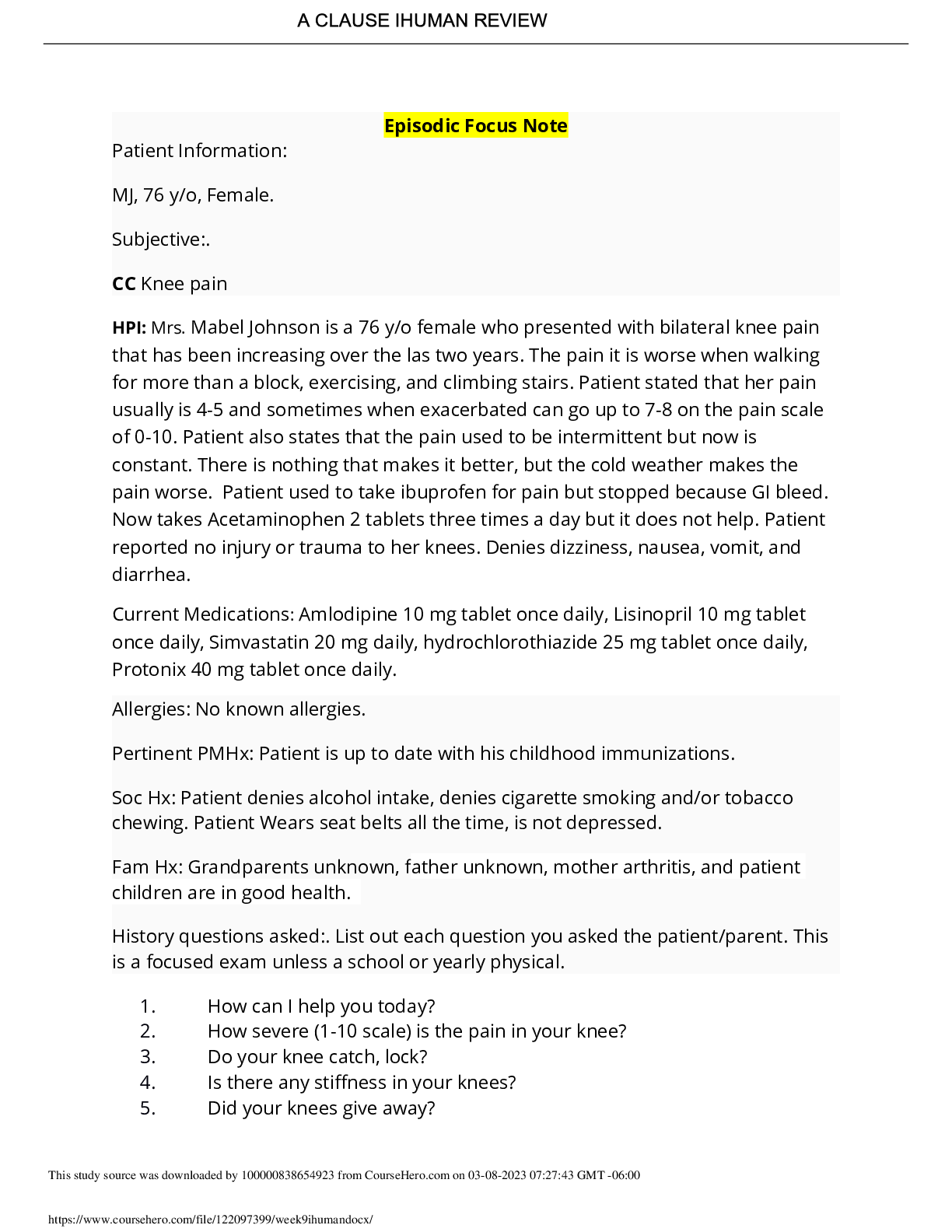
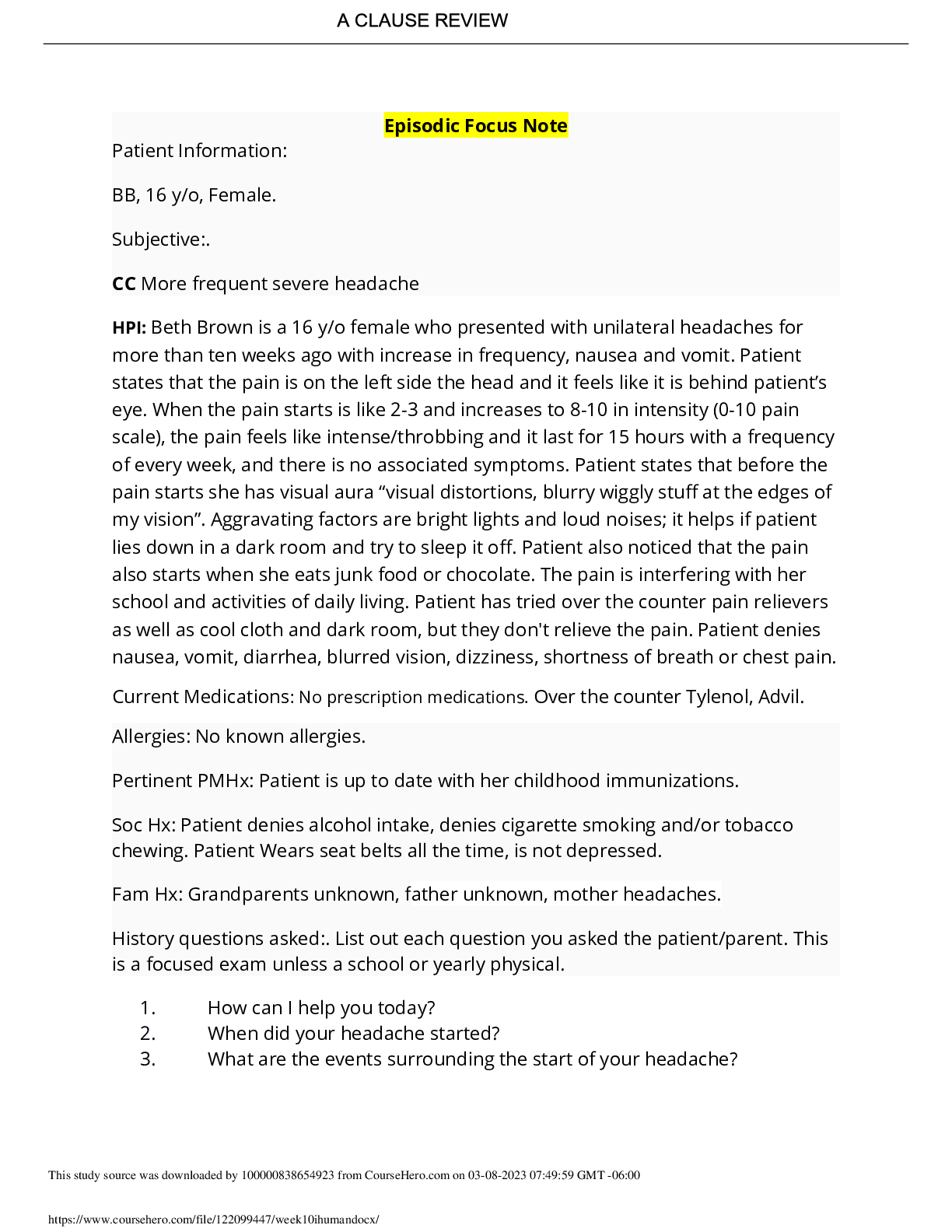


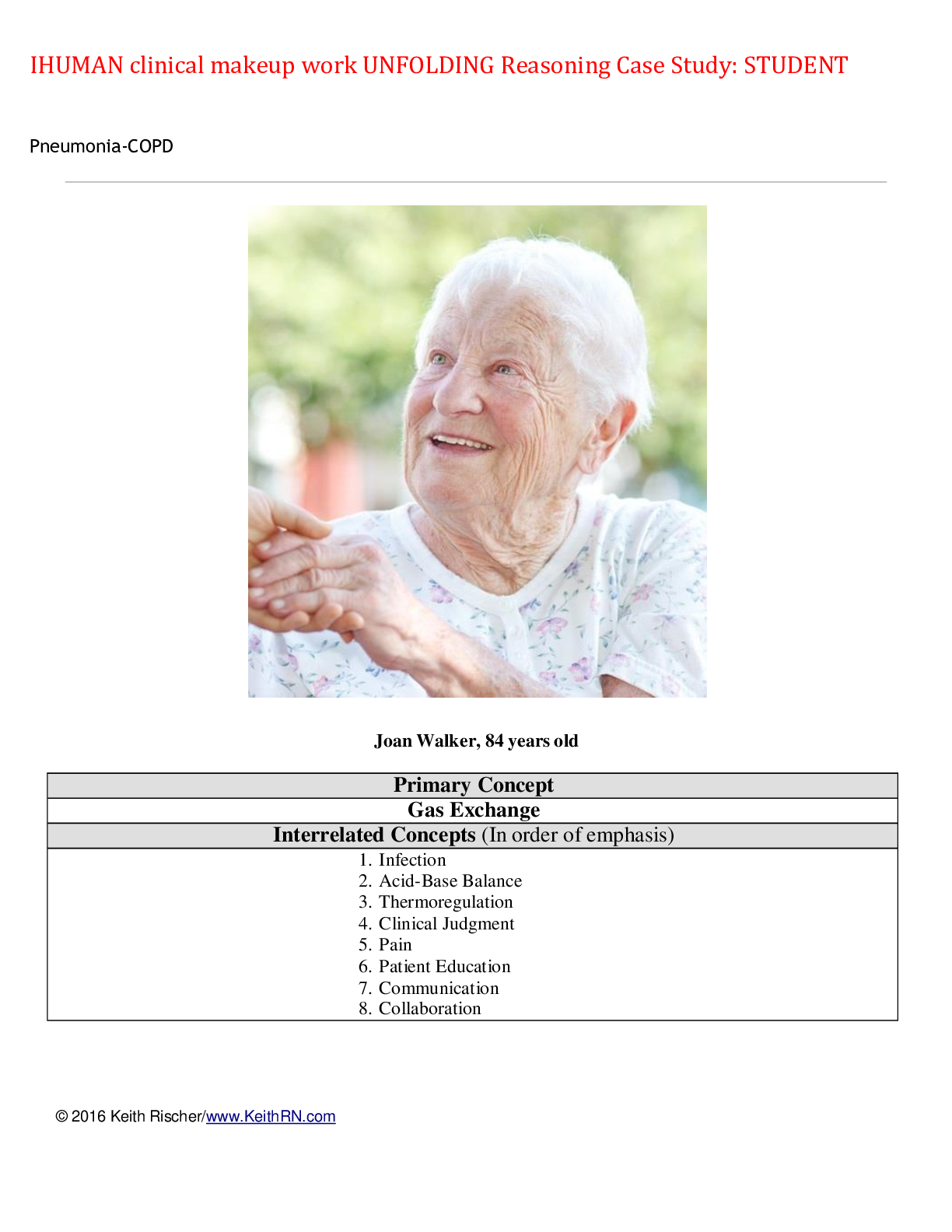
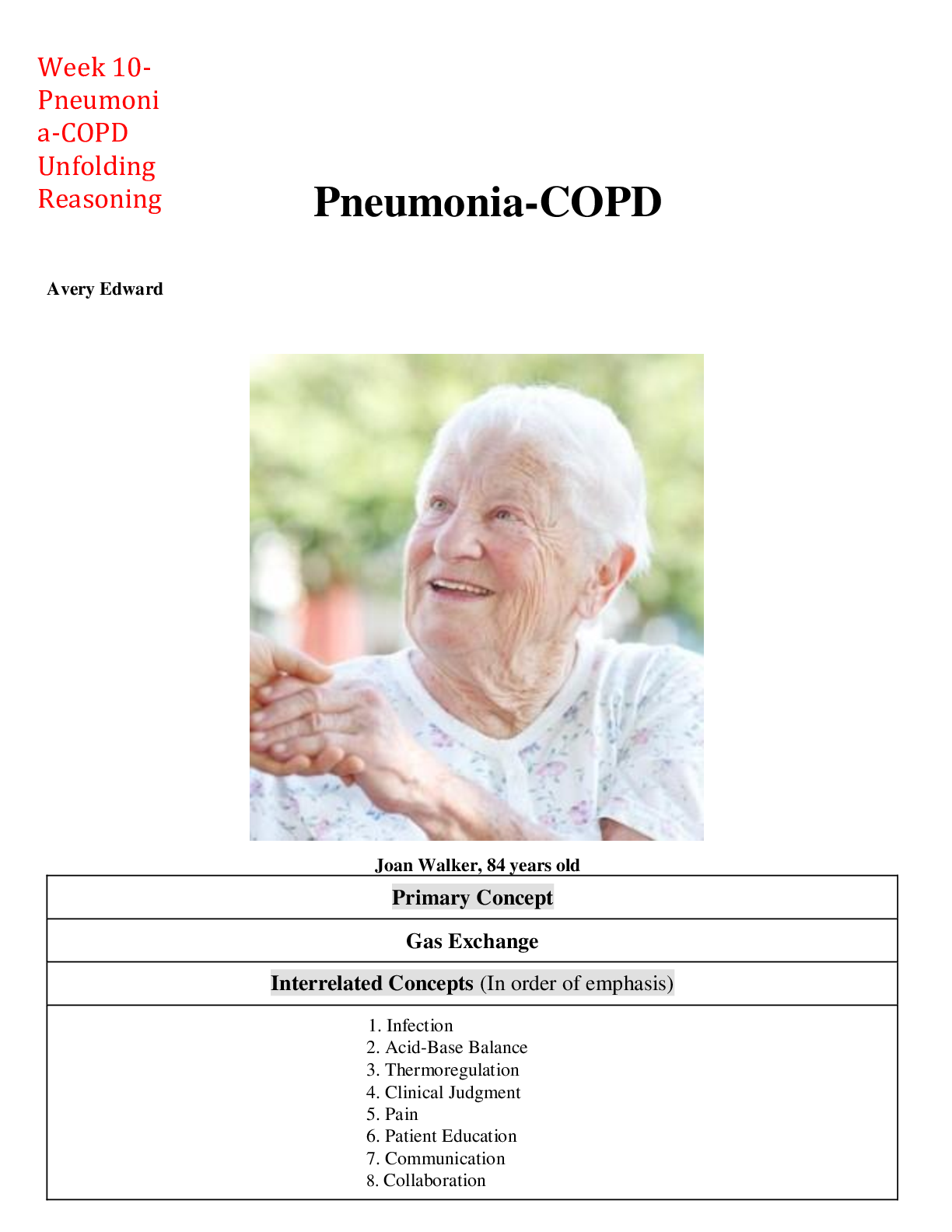
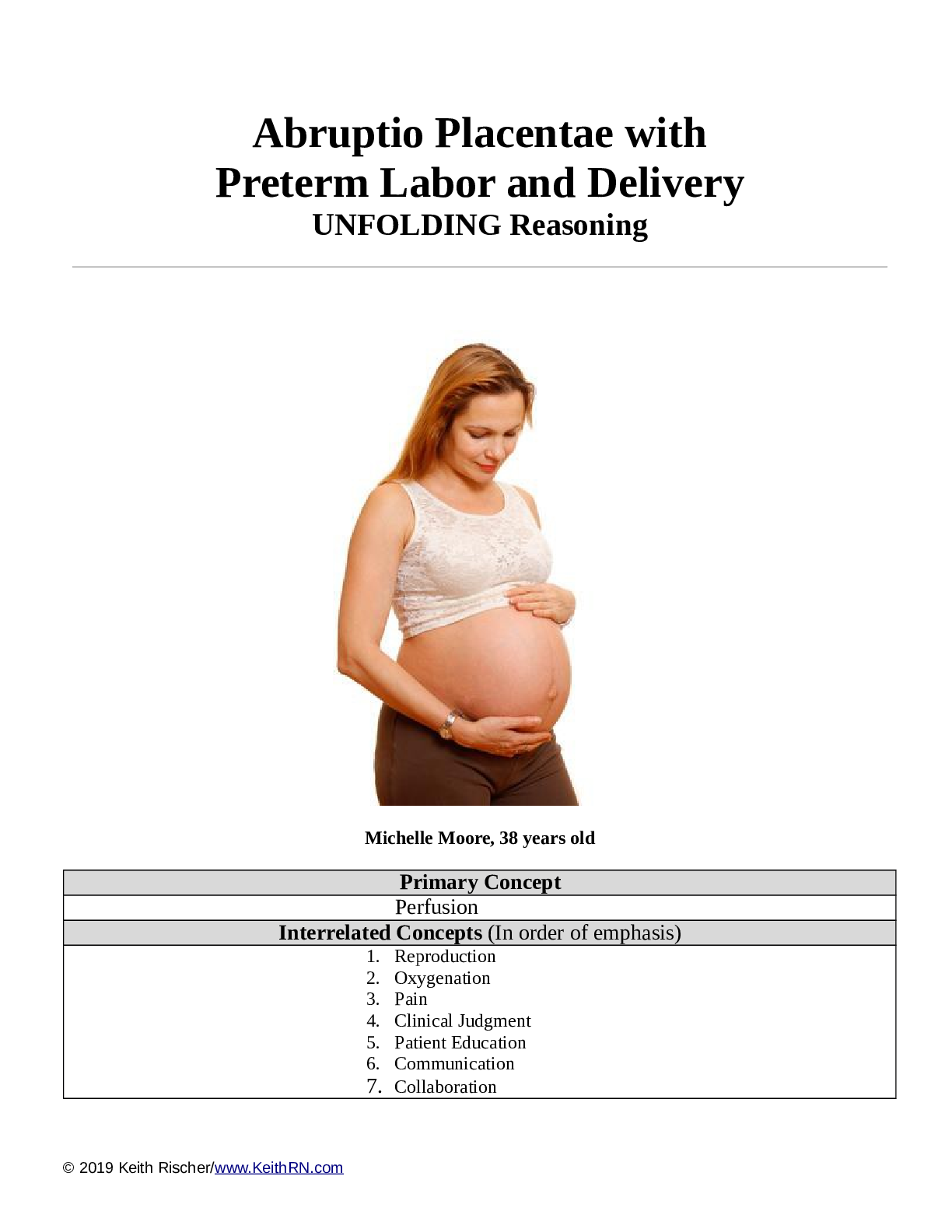
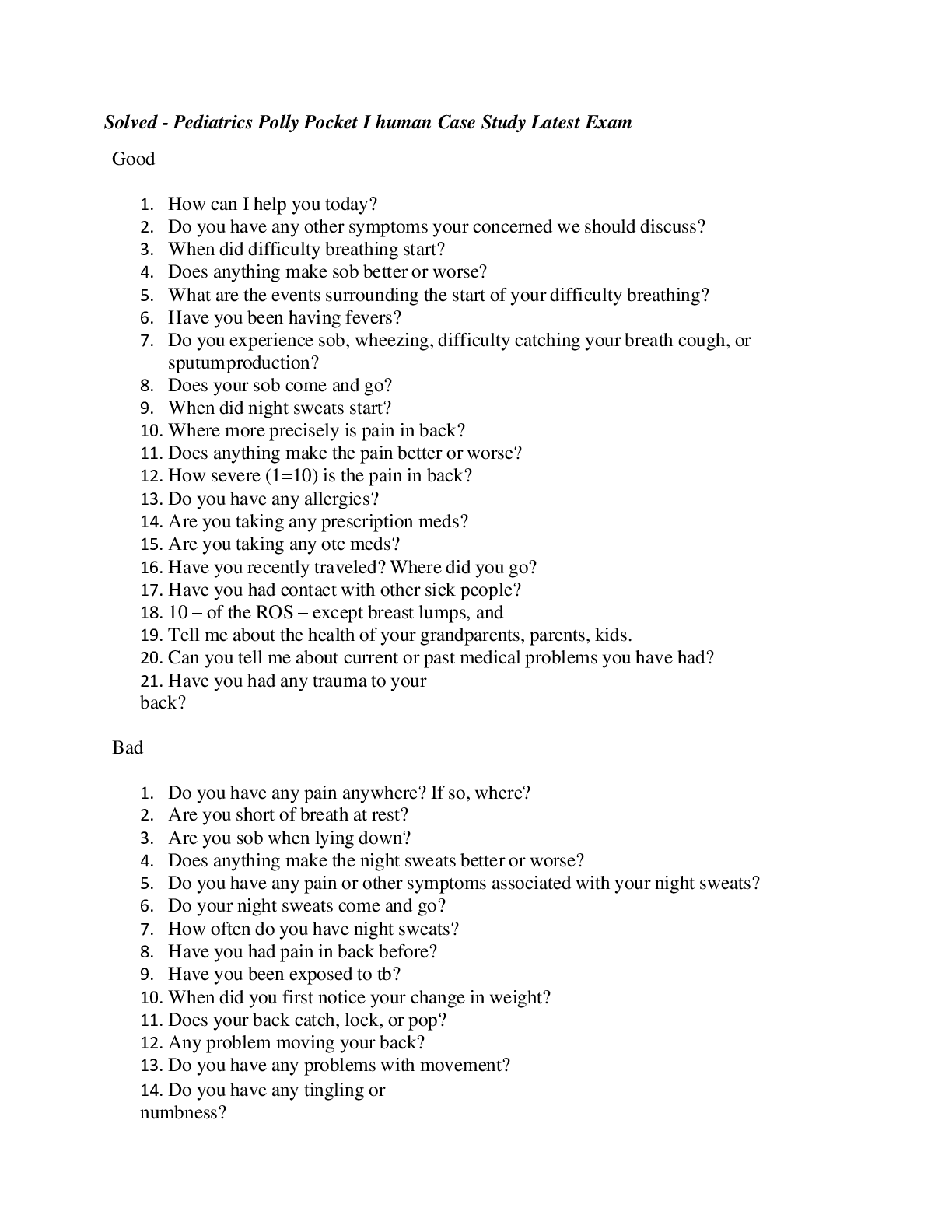


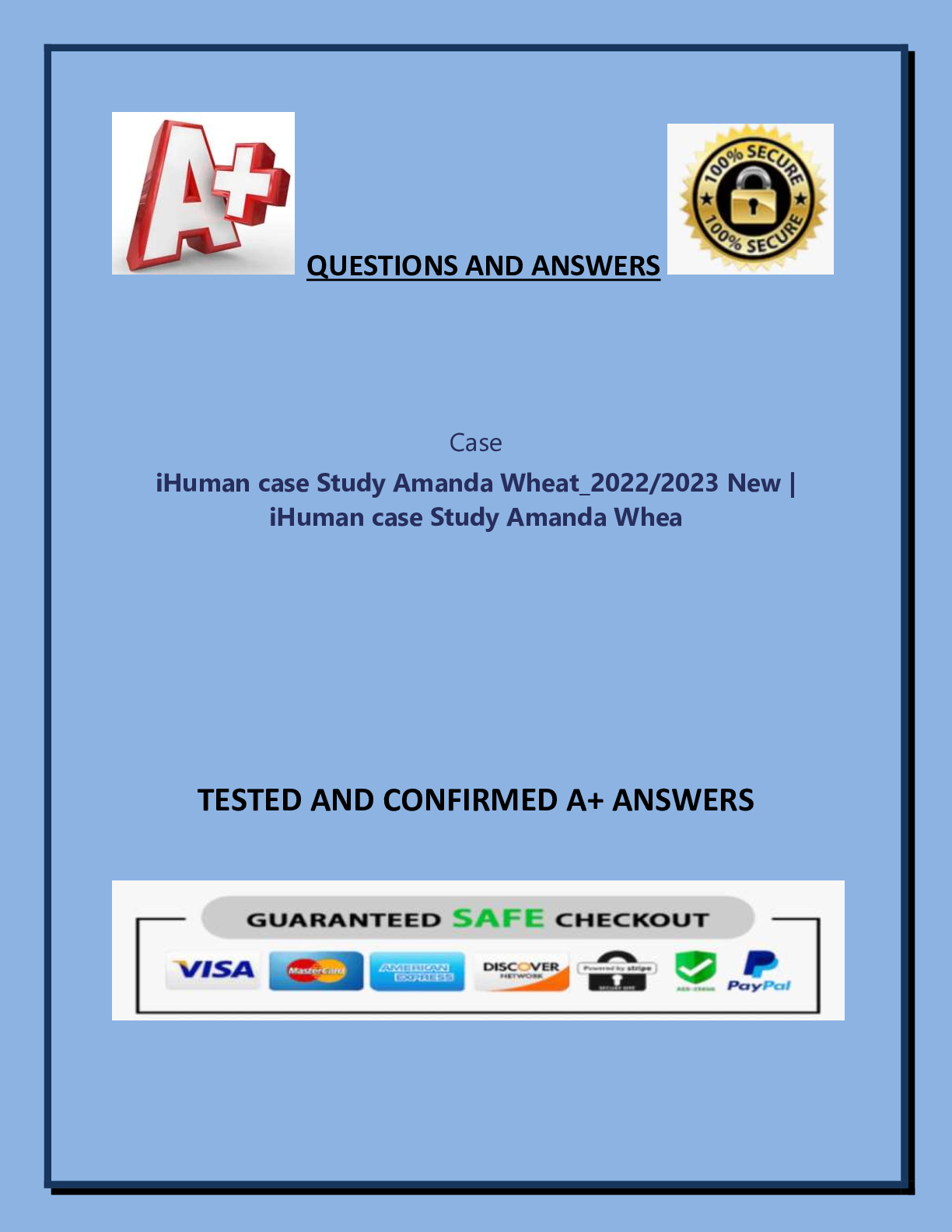
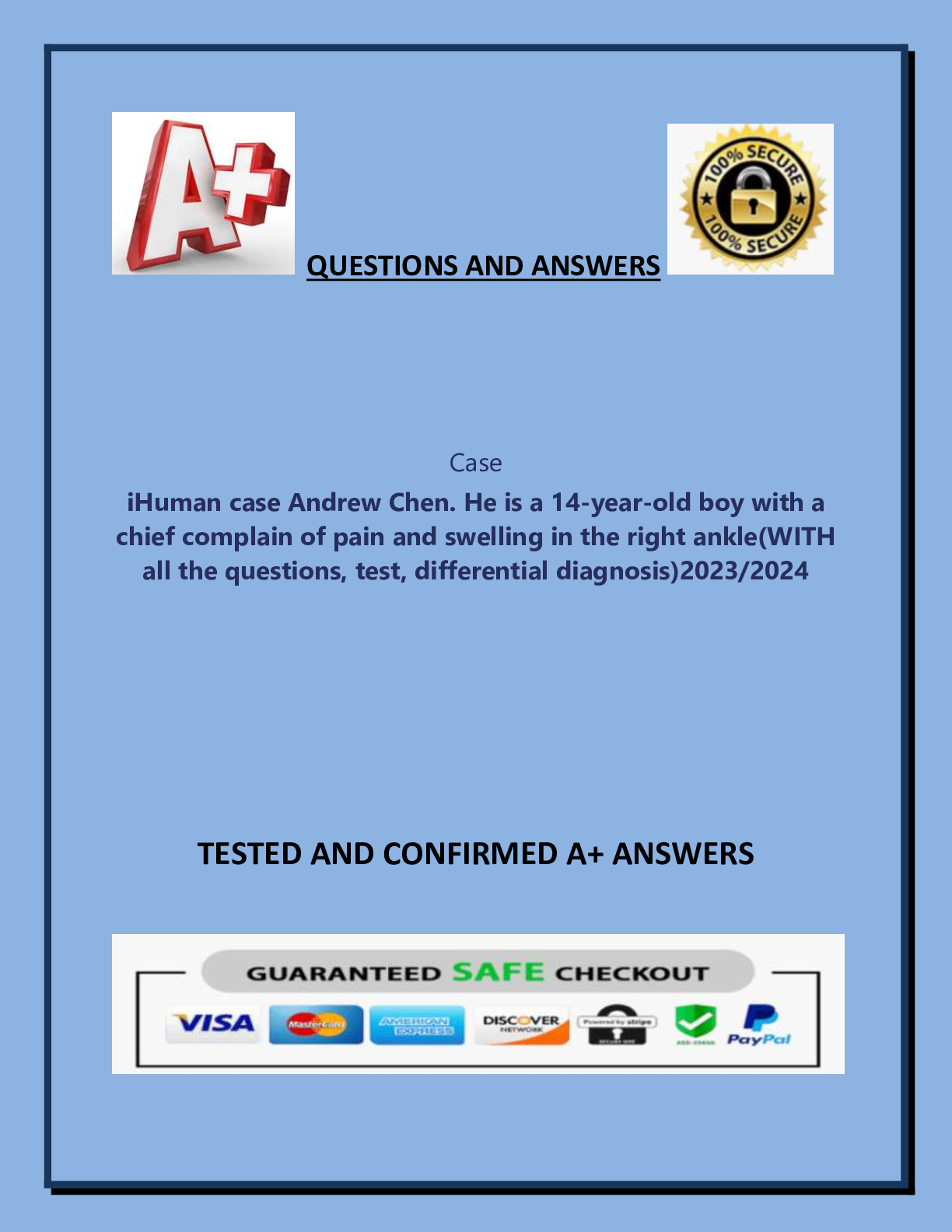
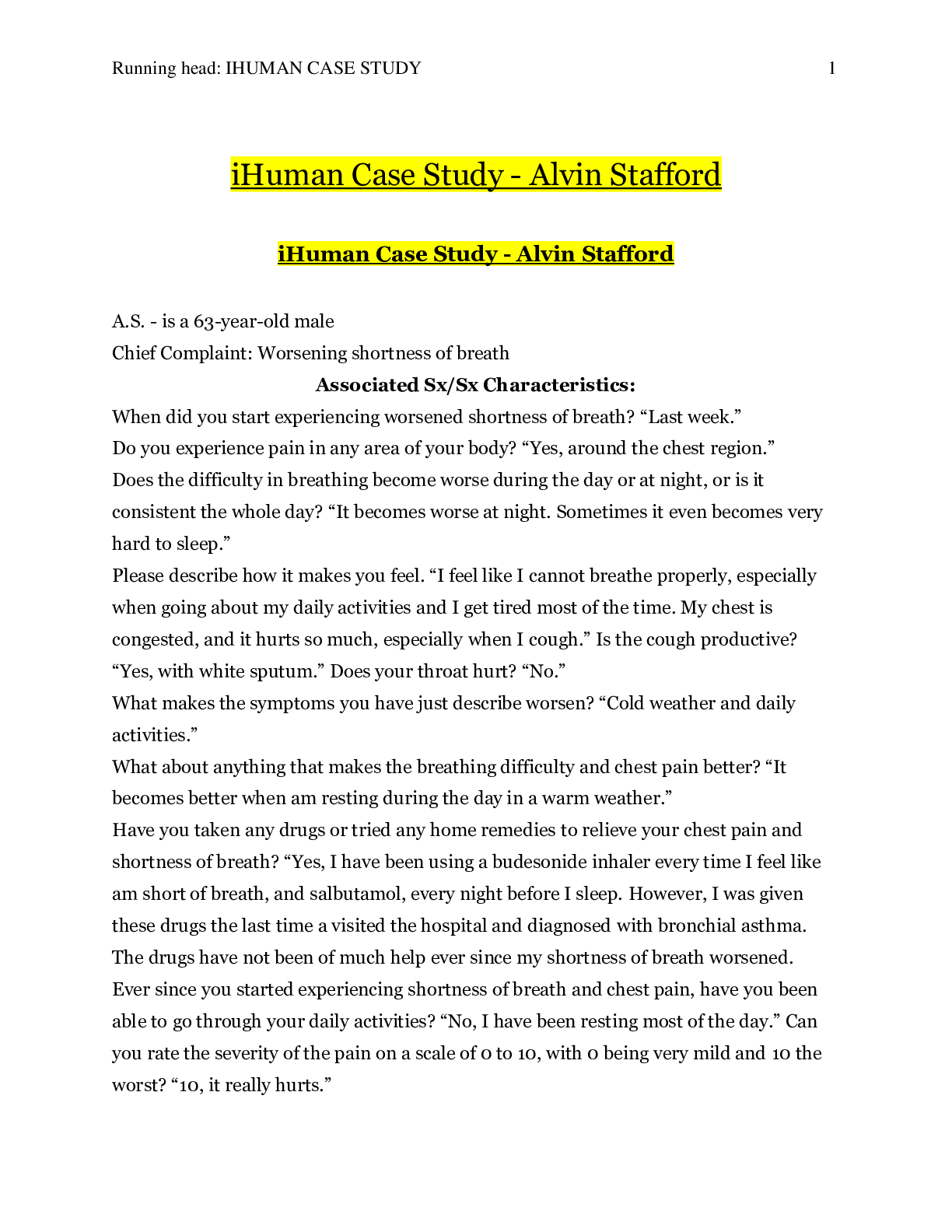

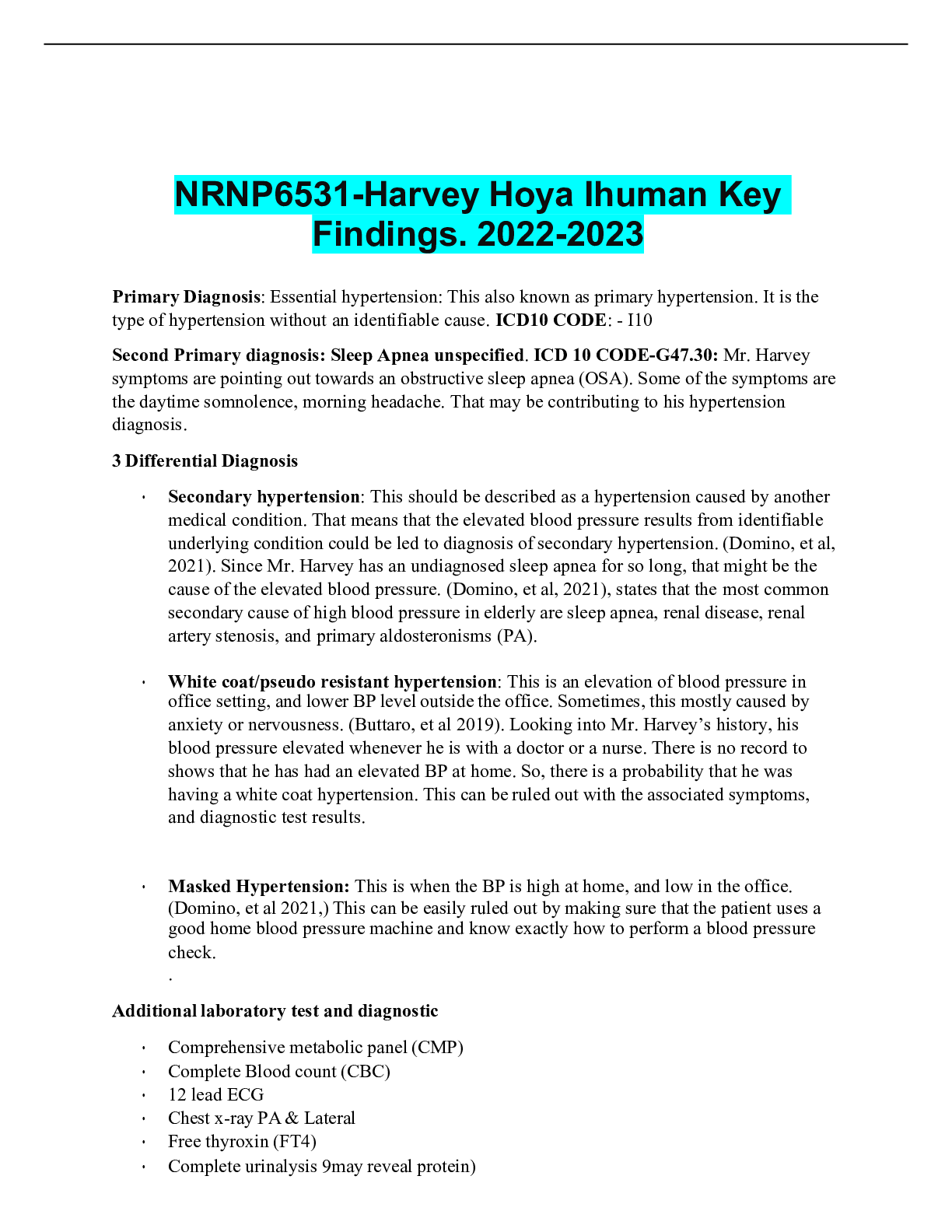
 2021.png)


